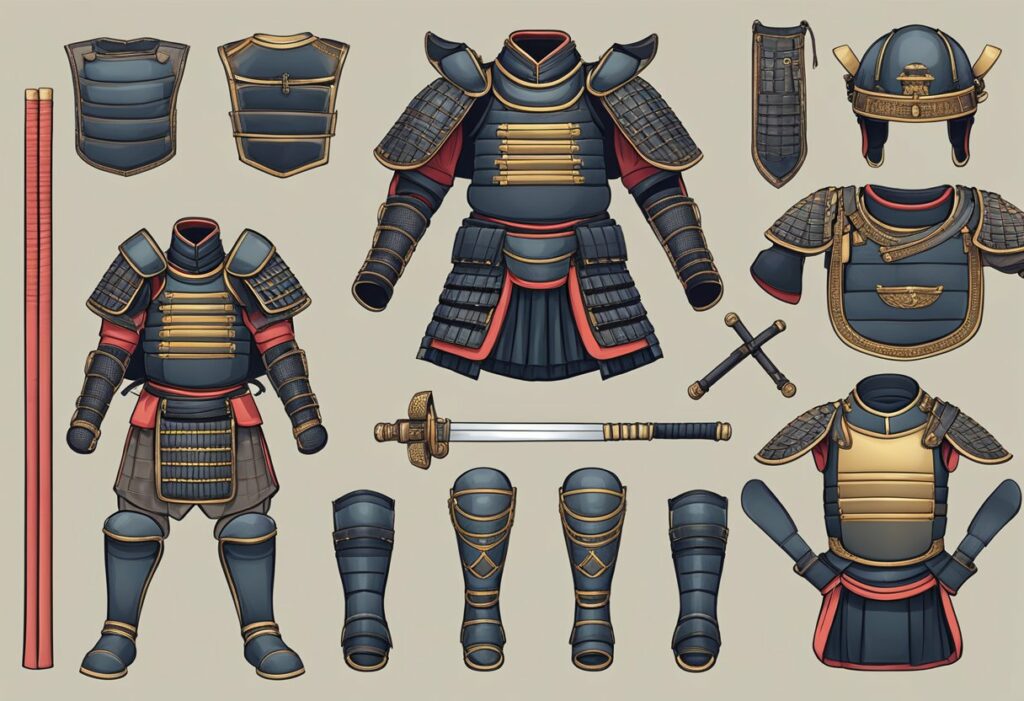In Japan, there are two main religions: Buddhism and Shinto. It is estimated that around 80% of the Japanese population follow Shinto rituals.
These include worshiping spirits and ancestors at public shrines and altars.
Around a similar percentage also follow aspects of Buddhism because people follow both religions simultaneously.
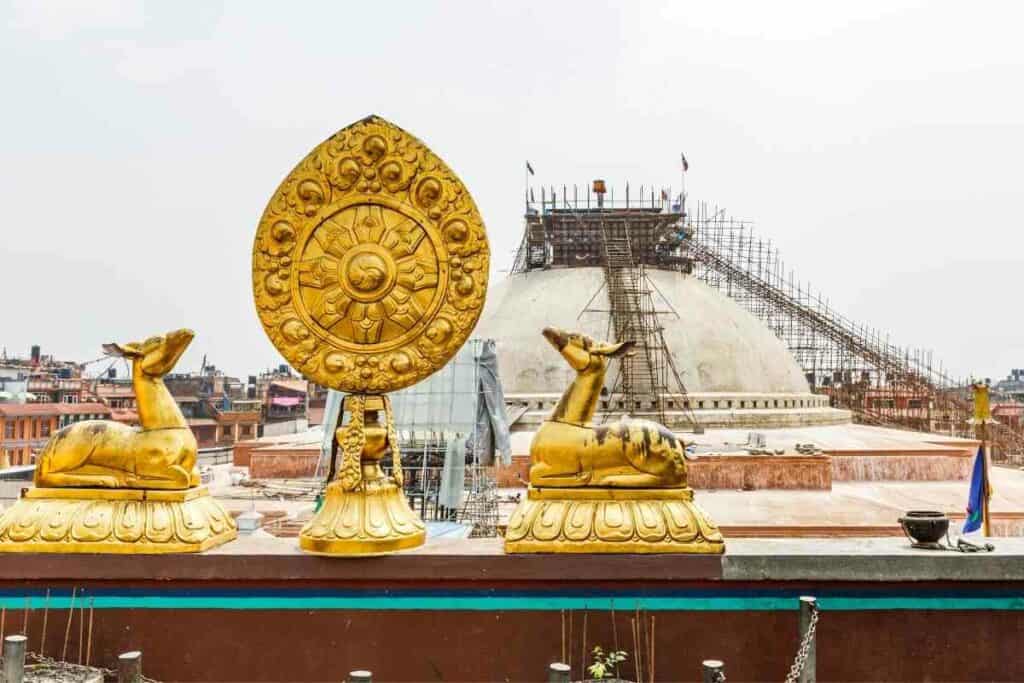
While more people are familiar with Buddhism, Shinto is somewhat of a mystery for non-Japanese folk.
Both religions have lots of sacred symbols.
In This Article – We’ll first explore some sacred Japanese symbols from the Shinto religion before exploring some from Buddhism.
Table of Contents
Sacred Japanese Symbols in Shinto
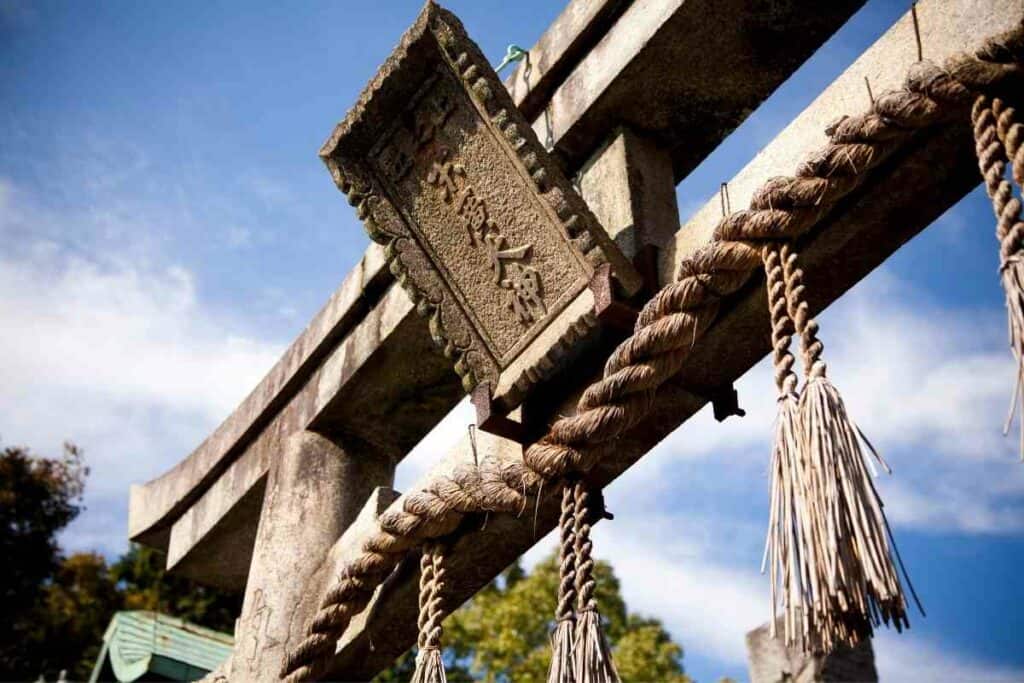
We’re going to look at six sacred Shinto symbols.
These include:
- Torii
- Shimenawa
- Shide
- Sakaki
- Tomoe
- Shinkyo
Are you preparing for a journey to Japan? Visit our partner, Japan Objects Store, to discover all the necessary items for your adventure, from travel must-haves to genuine Japanese products.
1.Torii Gates – Entrances to Shinto Shrines
Arguably the most iconic and easily recognizable of sacred Japanese symbols are torii – the majestic-looking gates that mark entrance ways to shrines in the Shinto religion.
Either made of stone or wood, torii have two posts and two horizontal platforms. The torii gates mark the boundaries where Kami (spirits or holy powers) will live.
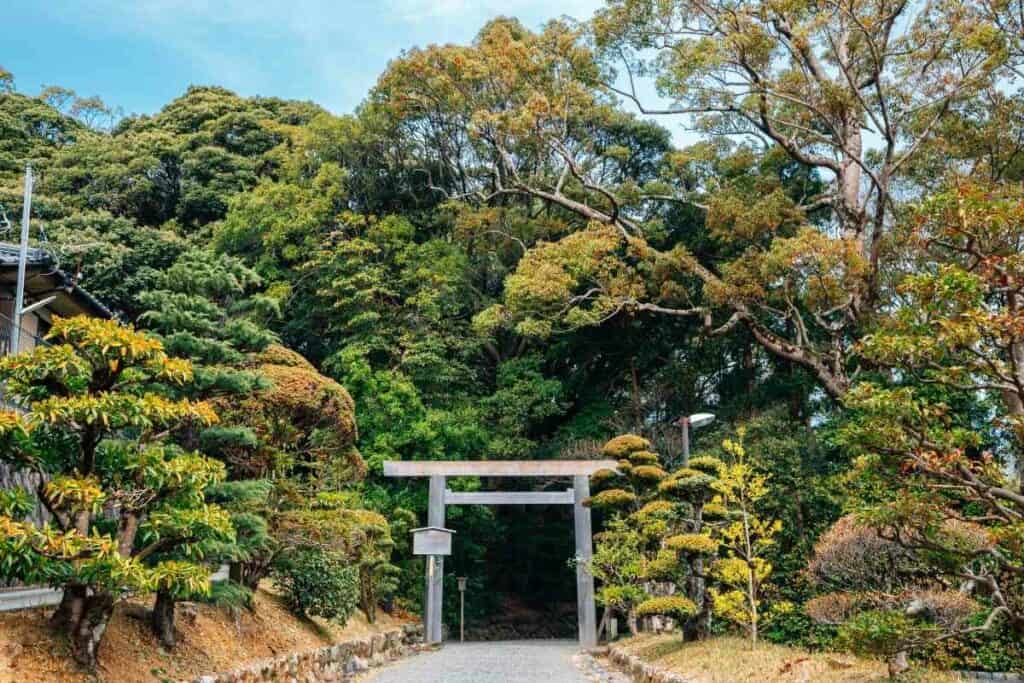
When you pass through a torii, it is believed to purify you. Purification is a big aspect of Shinto and there are many purification rituals.
Often, torii are red or orange. This is because the color red is seen as representing life and the sun in Japan.
It’s also believed to fend off disasters and bad omens.
When you pass through the torii, you’re said to be cleansed of your bad energy and you’ll only be bringing good energy to the resident Kami.
Lots of torii aren’t red; you can see a huge variety in wood, stone, and even metal. There are also different shapes of torii.
The most common two are Shinmei and myojin. Myojin torii have upward curves at the ends.
Their crossbeam also extends past the posts. Shimei, on the other hand, have a straighter top and the crossbeam doesn’t go past the posts.
Booking.com2. Shimenawa – the Sacred Rope in Shinto
A shimenawa is a rope that is typically adorned with white ornaments in zig-zags. These vary hugely in their diameter and size.
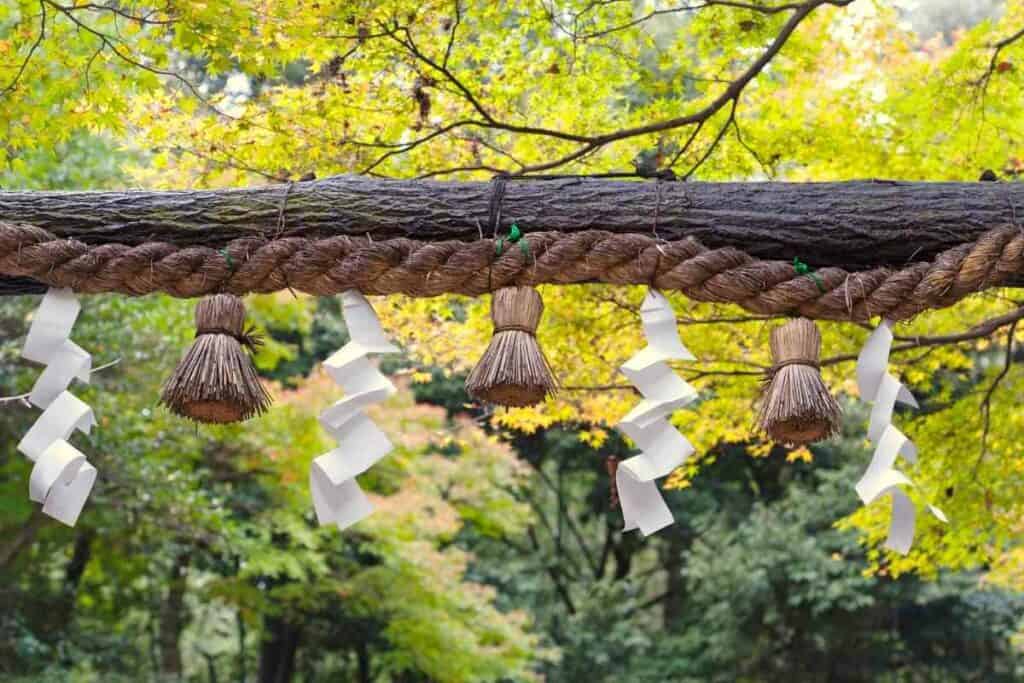
Some are just a few threads thick, while others are huge. These ropes have the purpose of warding off evil spirits.
You’ll often see one displayed on a torii, or wrapped around sacred rocks and trees (where Kami reside).
You might even see one around the waist of a champion sumo wrestler.
3. Shide – White Zig-Zag Paper Decorations
As mentioned above when talking about shimenawa, there are often white paper ornaments in a zig-zag form. These sacred Japanese symbols are called shide (pronounced “shee-day”).
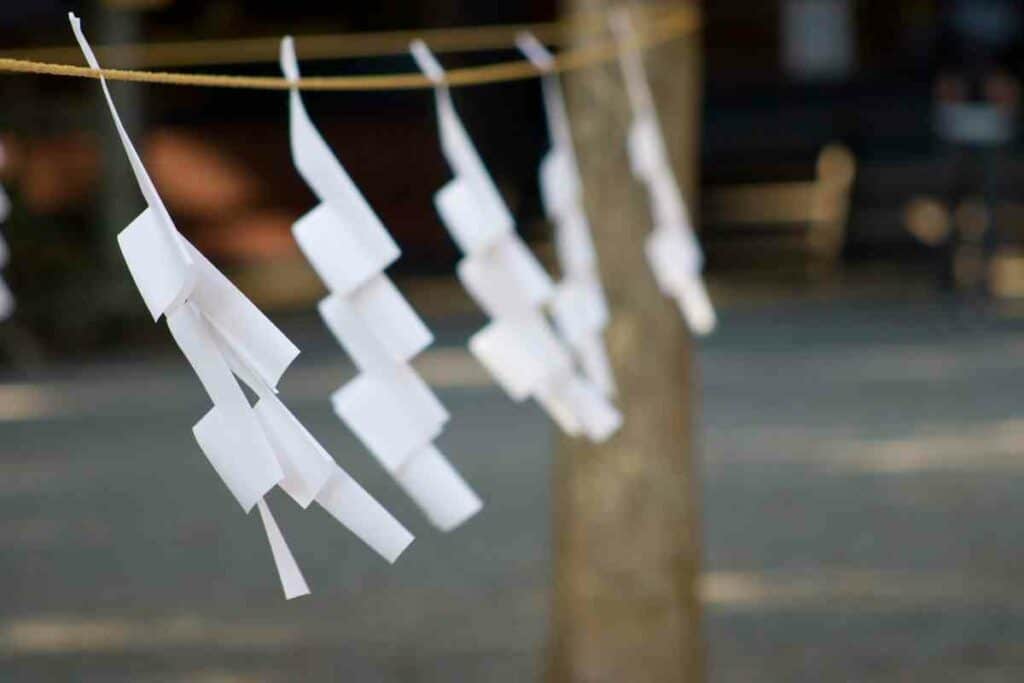
As well as decorating shrines, you will see them during purification ceremonies or along wands that Shinto priests use during ceremonies.
There are different beliefs about why shide have a zig-zag lightning shape.
Some people believe it represents the gods’ infinite power, while others believe it suggests lighting, rain, and clouds are what makes a good harvest with shide being a prayer to the Shinto gods for a bountiful harvest.
4. Sakaki – Sacred Trees in Shinto
A key part of Shintoism is worshipping nature and trees play an important role. Particular trees are believed to be sacred.
These are called shinboku. Like torii, you’ll see these trees surrounding a shrine to create sacred fences within which the space is purified.

There are a few different shinboku trees but the most important is the sakaki. This is a flowering evergreen tree that is native in Japan.
You’ll find these trees planted around shrines and you’ll see sakaki branches being used to provide offerings to the gods.
One reason why sakakis are believed sacred is because they are evergreens. This denotes their immortality.
They’re also linked to a legend in which one was decorated to lure the sun goddess Amaterasu out of a cave where she had been hiding.
5.Tomoe – Swirling Commas
The swirling commas, called tomoe are a sacred Japanese symbol reminiscent of China’s yin-yang symbol.
The meaning, however, and its use are different. Tomoe is translated often as “comma”.
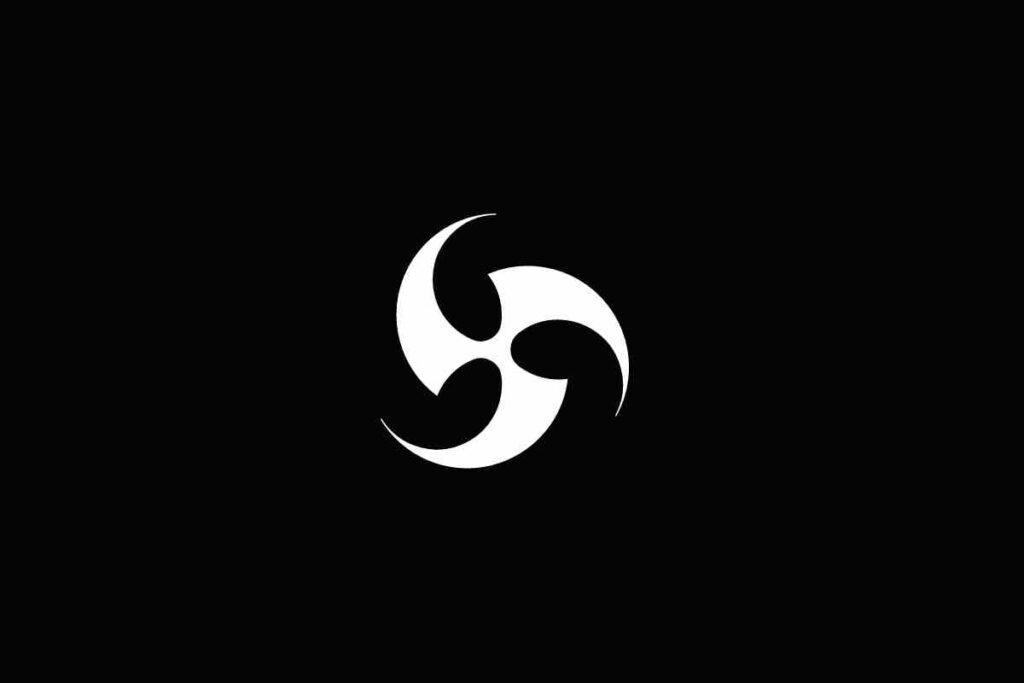
This symbol was often used in badges for people with authority. Tomoe symbols are specifically associated with samuai.
Tomoe symbols can have between two or four commas. The most common is three, which is called mitsu-domoe.
This symbol represents the three realms of existence and their interactions with one another. The realms are the underworld, earth, and heaven.
6. Shinkyo – God Mirror
Our last Japanese sacred symbol from Shinto is the God Mirror, or shinkyo. This is a mystical piece that is believed to connect the spirit realm with earth.
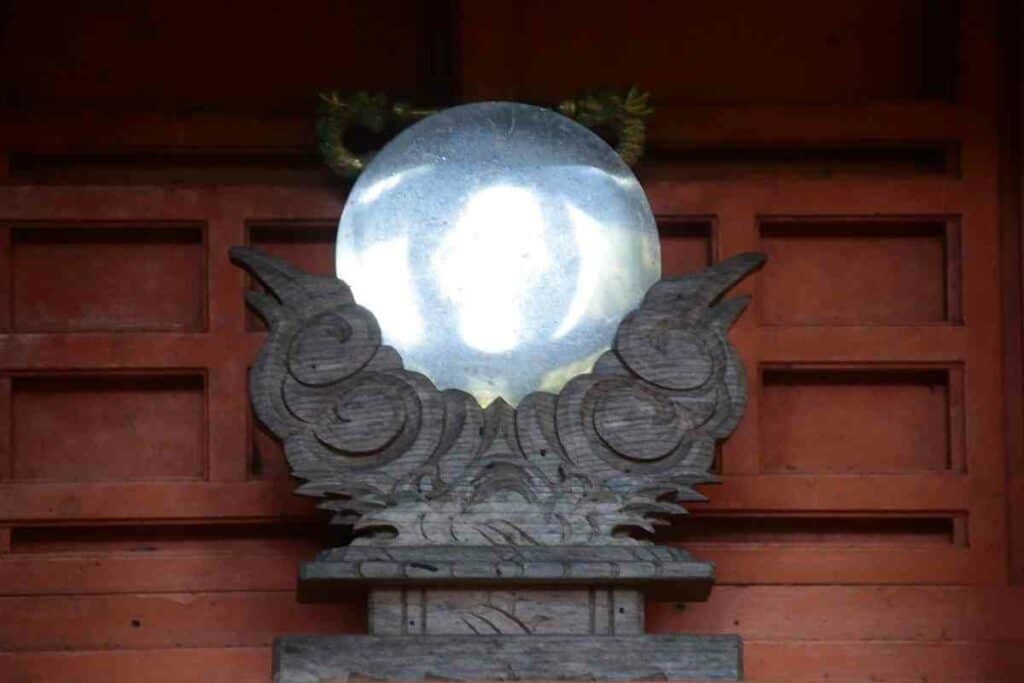
You’ll see shinkyo on display at alters. The idea is that the spirits will enter the shinkyo to get to our world.
Legend says that Amatersau, the Japanese sun goddess, hid in a cave and was in complete darkness.
To get her to come out, other gods had a party and hung a mirror and some jewels from a sakaki tree outside the cave to attract the sun goddess’s attention and get her to come out.
She looked out and asked what the celebration was.
The gods told her that there was a beautiful goddess outside the cave. When she came out, she saw herself in the mirror and the gods sealed the cave with a shimenawa.
Sacred Japanese Symbols in Buddhism
We’re now going to look at five sacred Japanese symbols in Buddhism.
These are:
- Shakujo
- Hokyo
- Gachirin
- Kyobaku
- Hoju
7. Shakujō – Scepter or Staff – the Pilgrim’s Staff
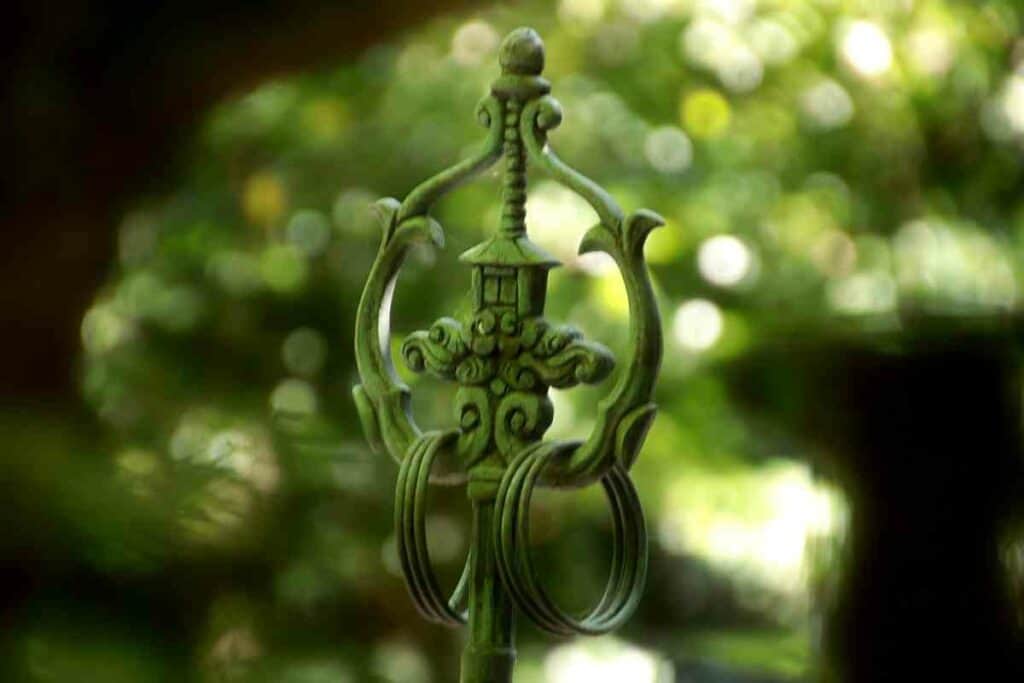
In Buddhist tradition, pilgrims, beggars, and monks would carry staffs with rings dangling from the top.
The shakujo has six rings, which represent the six realms of karmic rebirth.
8. Hōkyō – Mirror
The mirror is said to draw forth intelligence in order to liberate your mind.
It also represents how life is an illusion; with a mirror not representing reality but rather a reflection of it.
This is, therefore, a metaphor depicting unenlightened minds that are deluded by appearances.
9. Gachirin – Moon Disc
This sacred Japanese symbol is a round circle that represents the full moon.
It’s used frequently in sculpture and paintings in Buddhism.
It is said to represent Buddha’s virtue and knowledge, which are all-encompassing and perfect. You can also find talismans of the gachirin with rabbits drawn inside.
People buy these talismans under the belief that they reduce fever.
10. Kyōbaku – Sutra box
This sacred symbol is said to bring happiness for the next world.
A kyobaku represents a treasure box of sorts and typically would be a receptacle for Buddhist scriptures and teachings.
11. Hōju – Wish-Granting Jewel
According to Buddhism, the hoju brings wealth and grants wishes.
This sacred symbol looks like a single orb with a pointed top.
It can also be depicted as three jewels, representing the Three Jewels of Buddhism – Buddha, Dharma, and Sangha.
You might see this jewel depicted as an ornament on a temple-roof, as a held object by deities, or on weapons carried by deities. It’s also in mandala paintings.
Other Symbols in Japan
As well as the sacred symbols, Japan is full of lots of other interesting symbols too. There is the symbol of a chrysanthemum with sixteen petals.
This is typically orange or white and you’ll often see it on Shinto shrines. It is the Imperial Seal of Japan and its coat of arms.
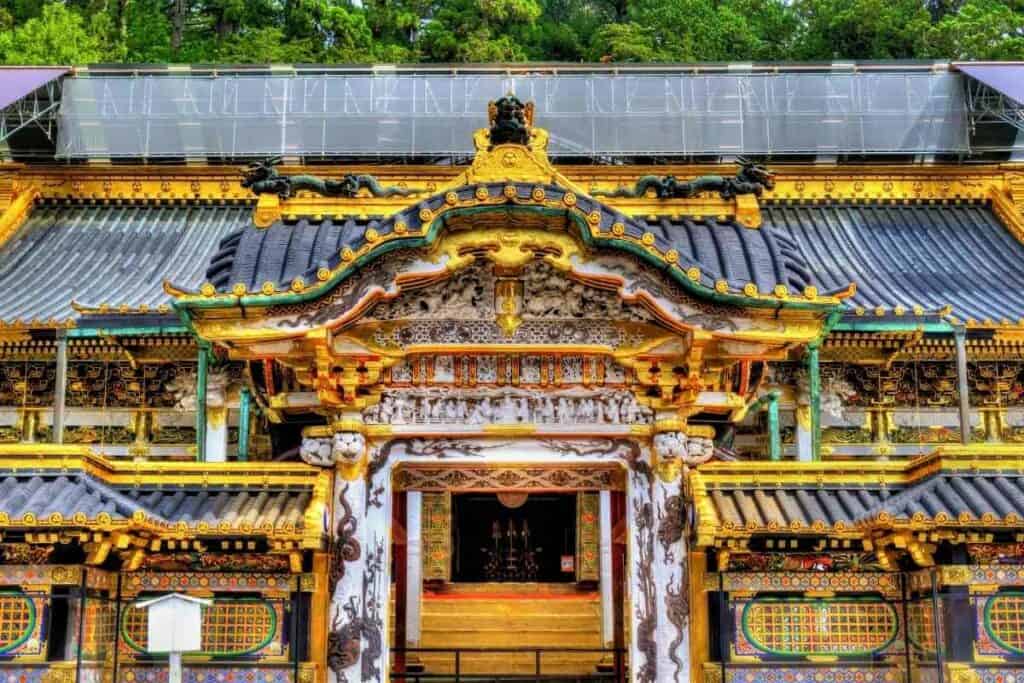
Another huge symbol that we can’t fail to mention is the Japanese flag. Most people who know a little about Japan know that its flag, the Nisshoki or more commonly the Hinomaru, is the Rising Sun flag.
One final symbol that deserves a mention (in case you see it and start worrying!) is the Temple symbol called the manji.
Why would you start worrying? Well, it is a swastika but has absolutely no relation to the Nazis, thankfully!
Final Thoughts on Sacred Japanese Symbols
We’ve only really scratched the surface when it comes to uncovering sacred Japanese symbols but now, you’ll certainly have some things to look out for on your travels around Japan.
Visiting a Shinto shrine is a must, and you’ll certainly see lots of sacred symbols in one visit there! See if you can spot torii gates, a shimenawa, shide, or tomoe on your visits.
You Might Also Like
- 12 Things Tourists Should NEVER Say in Japan
- Kissing Robot: Exploring the Popularity of the Chinese Kissing App
- Unlocking the Secret Dating Rituals Only Locals Know in Japan
- Samurai Armor: Ancient Protection for Japan’s Elite Warriors
- 10 Amazing Facts About Schools in Japan: Unique Traditions and Educational Practices
- Where can you see snow monkeys in Japan: Best locations and viewing tips




